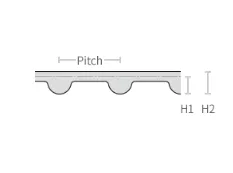- Arabic
- French
- Russian
- Spanish
- Portuguese
- Turkish
- Armenian
- English
- Albanian
- Amharic
- Azerbaijani
- Basque
- Belarusian
- Bengali
- Bosnian
- Bulgarian
- Catalan
- Cebuano
- Corsican
- Croatian
- Czech
- Danish
- Dutch
- Afrikaans
- Esperanto
- Estonian
- Finnish
- Frisian
- Galician
- Georgian
- German
- Greek
- Gujarati
- Haitian Creole
- hausa
- hawaiian
- Hebrew
- Hindi
- Miao
- Hungarian
- Icelandic
- igbo
- Indonesian
- irish
- Italian
- Japanese
- Javanese
- Kannada
- kazakh
- Khmer
- Rwandese
- Korean
- Kurdish
- Kyrgyz
- Lao
- Latin
- Latvian
- Lithuanian
- Luxembourgish
- Macedonian
- Malgashi
- Malay
- Malayalam
- Maltese
- Maori
- Marathi
- Mongolian
- Myanmar
- Nepali
- Norwegian
- Norwegian
- Occitan
- Pashto
- Persian
- Polish
- Punjabi
- Romanian
- Samoan
- Scottish Gaelic
- Serbian
- Sesotho
- Shona
- Sindhi
- Sinhala
- Slovak
- Slovenian
- Somali
- Sundanese
- Swahili
- Swedish
- Tagalog
- Tajik
- Tamil
- Tatar
- Telugu
- Thai
- Turkmen
- Ukrainian
- Urdu
- Uighur
- Uzbek
- Vietnamese
- Welsh
- Bantu
- Yiddish
- Yoruba
- Zulu
Dic . 09, 2024 19:29 Back to list
Comparing and Choosing the Right 8pk Belt Sizes for Your Needs
Understanding 8PK Belt Sizes A Comprehensive Guide
When it comes to automotive maintenance and repairs, understanding the various components involved is crucial. One essential component found in many vehicles is the serpentine belt, commonly known as an 8PK belt. This article will delve into what an 8PK belt is, its sizes, and how to determine the right size for your vehicle.
What is an 8PK Belt?
An 8PK belt is a type of serpentine belt that comprises eight ribs or grooves. The PK designation indicates that it is a multi-ribbed belt, which is designed to efficiently drive multiple accessories in an engine, such as the alternator, water pump, power steering pump, and air conditioning compressor. The eight ribs allow for better grip and reduced slippage, ensuring that these components run smoothly and efficiently.
Importance of Choosing the Right Size
Choosing the correct belt size is critical for optimal engine performance. A belt that is too tight can cause wear on both the belt and the components it drives, while a belt that is too loose can slip, leading to underperformance of the accessories and potential overheating of the engine. Therefore, knowing how to read the size markings on an 8PK belt can save you time, money, and prevent unnecessary repairs.
How to Determine the Correct Size
To find the right size 8PK belt for your vehicle, you will need to look at a few specifications. Most importantly, you'll want to check the length and width. The size of a serpentine belt is usually delineated in the format PKXXXX where XXXX represents the length in millimeters. Some common sizes for 8PK belts include 8PK1000 (1000 mm), 8PK1060 (1060 mm), and 8PK1120 (1120 mm).
8pk belt sizes

To measure your existing belt, follow these steps
1. Remove the Belt If you're replacing an old belt, carefully remove it from the pulley system. 2. Measure the Length Use a measuring tape to measure the path the belt follows around the pulleys. Make sure to take the measurement along the centerline of the belt. 3. Measure the Width Determine the width of the belt by measuring one of the ribs. Most 8PK belts will have a width of about 1 inch (approximately 25.4 mm).
Common Applications
8PK belts are found in a wide range of vehicles, from compact cars to SUVs and trucks. They are highly versatile and can be used in various applications, not just in cars but also in industrial machinery and generators. Because of their design and ribbed structure, they provide superior performance across various load conditions, ensuring longevity and efficiency.
Maintenance Tips
Regular checks on your serpentine belt, including the 8PK, are vital to preemptively catch signs of wear and tear. Look for fraying, cracking, or glazing on the surface of the belt. Replacing your belt at recommended intervals—typically every 60,000 to 100,000 miles—is a proactive approach to automotive maintenance.
In conclusion, understanding 8PK belt sizes and their importance in vehicle operation is essential for anyone involved in automotive care. By knowing how to measure properly and select the right size, you can contribute to the longevity and performance of your vehicle. Regular maintenance and timely replacements will ensure that your engine runs smoothly and efficiently, allowing you to enjoy a reliable driving experience.
-
Korean Auto Parts Timing Belt 24312-37500 For Hyundai/Kia
NewsMar.07,2025
-
7PK2300 90916-T2024 RIBBED BELT POLY V BELT PK BELT
NewsMar.07,2025
-
Chinese Auto Belt Factory 310-2M-22 For BMW/Mercedes-Benz
NewsMar.07,2025
-
Chinese Auto Belt Factory 310-2M-22 For BMW/Mercedes-Benz
NewsMar.07,2025
-
90916-02660 PK Belt 6PK1680 For Toyota
NewsMar.07,2025
-
drive belt serpentine belt
NewsMar.07,2025

